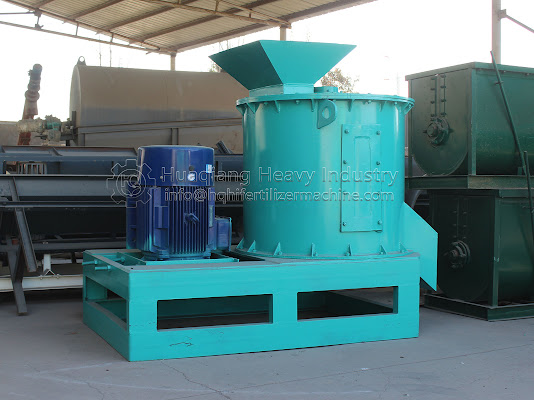Organic fertilizer granulator can be divided into disc granulator, ball granulator, horizontal granulator, rotary drum granulator, flat die granulator. The working principle of the organic fertilizer granulator is to crush and compress organic fertilizers, such as corn straw, wheat straw, straw and other plant stalks, as well as plant fruit shells such as straw and peanut shells, and finally form organic fertilizer particles that are conducive to preservation and use. For organic manure raw material animal manure and urine, pile retting fertilizer, green fertilizer, sea fertilizer, cake fertilizer, grass char, soil fertilizer, microorganism and other urban domestic waste organic fermentation fertilizer granulation specific, the particles are pellet. Organic fertilizer granulator qualified granulation rate of more than 80-90%, adapt to a variety of different formulations, the compressive strength of organic fertilizer is higher than the disk and drum, the large ball rate is less than 15%, the particle size uniformity can be adjusted according to user requirements through the organic fertilizer granulator stepless speed regulation function. Organic fertilizer granulator is the most widely used fertilizer granulation equipment, advanced technology, uniform granulation, the production of organic fertilizer particles, non-toxic, tasteless, pollution-free, is the best fertilizer to replace fertilizer, organic fertilizer factory, feed factory, agricultural and animal husbandry plant, sewage treatment plant, township, town, village, farmers entrepreneurial ideal choice. Coupled with low price, good quality, small investment, quick effect, is a good project to start a business and get rich.
Maintenance points of organic fertilizer equipment
The maintenance of organic fertilizer equipment is the key to ensure its long-term stable operation. The following are some key points of organic fertilizer equipment maintenance: 1. Regular cleaning: The residue and dust on the equipment should be cleaned regularly during the use of the equipment, especially in the transmission parts and sealing parts, to avoid premature wear and failure of the equipment. 2. Lubrication maintenance: Add lubricating oil to the transmission parts and friction parts of the equipment regularly to reduce the coefficient of friction and ensure the normal operation of the equipment. 3. Fastening check: Check whether the connection bolts, nuts and oil drain plugs are loose to ensure the stability and safety of the equipment. 4. Electrical performance testing: Regularly test the electrical system, including power supply voltage, power plug and socket, etc., to ensure the normal operation of the electrical system. 5. Temperature m...




Comments
Post a Comment